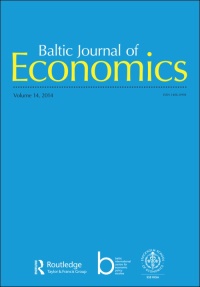Formal Integration: FDI and trade in Europe
Formal Integration: FDI and trade in Europe
Author(s): Camilla JensenSubject(s): Supranational / Global Economy, Economic policy, International relations/trade, Economic development, EU-Accession / EU-DEvelopment, Financial Markets
Published by: BICEPS/SSE Riga
Keywords: Formal integration; European Union; EU membership; Central and Eastern Europe; foreign direct investment; trade;
Summary/Abstract: The paper seeks to explain why formal integration, i.e. membership of the European Union (EU), should matter to Central and Eastern Europe (CEE) by testing a number of hypotheses about the relationship, respective levels and intensity of relationship of the two fundamental forces of real integration: trade and foreign direct investment (FDI). It is expected that formal integration will matter to the level of flows due to a concentric bias (trade creation) arising from introducing deeper integration among countries. But the effect on FDI may be more ambiguous since a lowering of transaction cost should make firms substitute from FDI towards more trade. The analysis shows that FDI and trade are complements at the bilateral aggregate country level within Europe. The analysis also verifies that formal integration has given rise to a concentric bias, but only in the aspect of trade. While the present EU member and the new Accession countries participate equally in FDI flows. The analysis of intensity of relationship between trade and FDI, gives very strong and positive results. Contrary to earlier analysis it is found that causation is two-way and much greater for the chain of causation running from trade to FDI especially in intra-Union flows. But it is also verified that FDI is a particularly important catalyst of trade between the EU and CEE countries.
Journal: Baltic Journal of Economics
- Issue Year: 5/2005
- Issue No: 1
- Page Range: 5-27
- Page Count: 23
- Language: English

